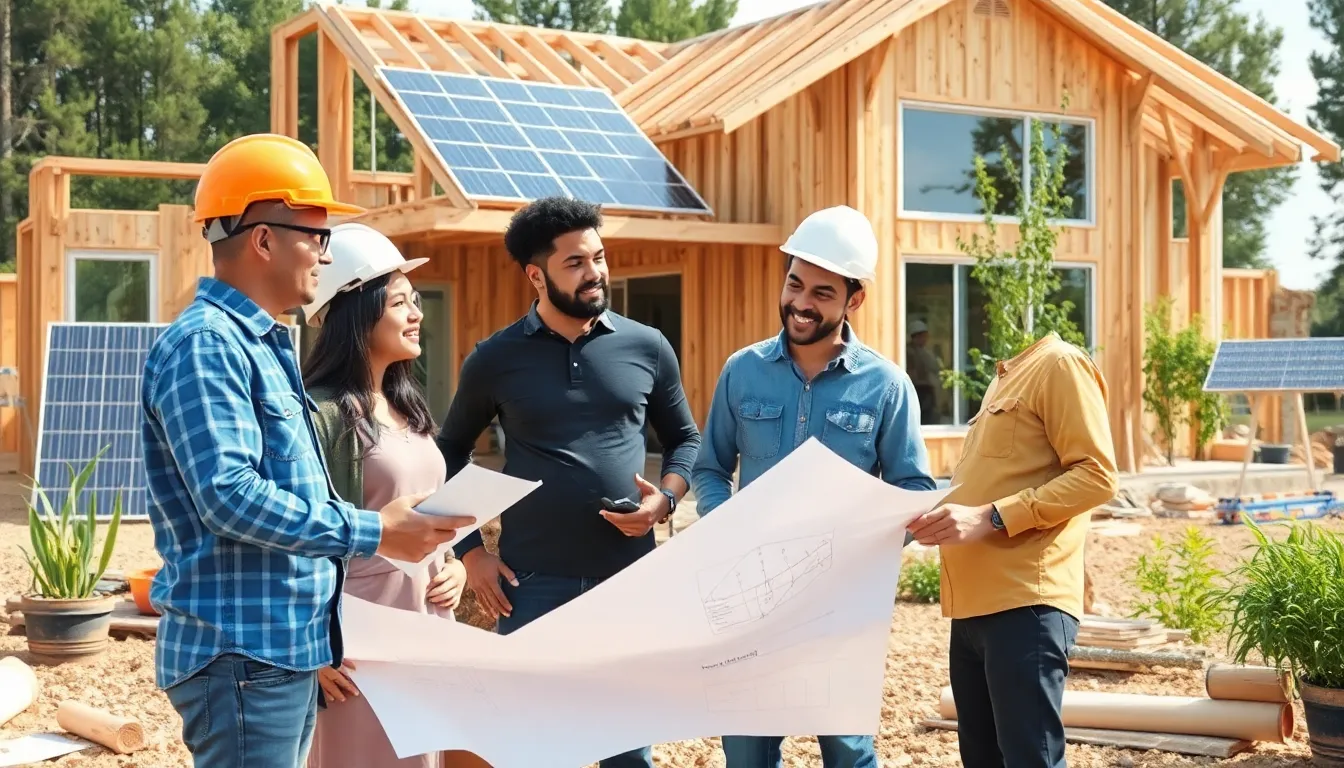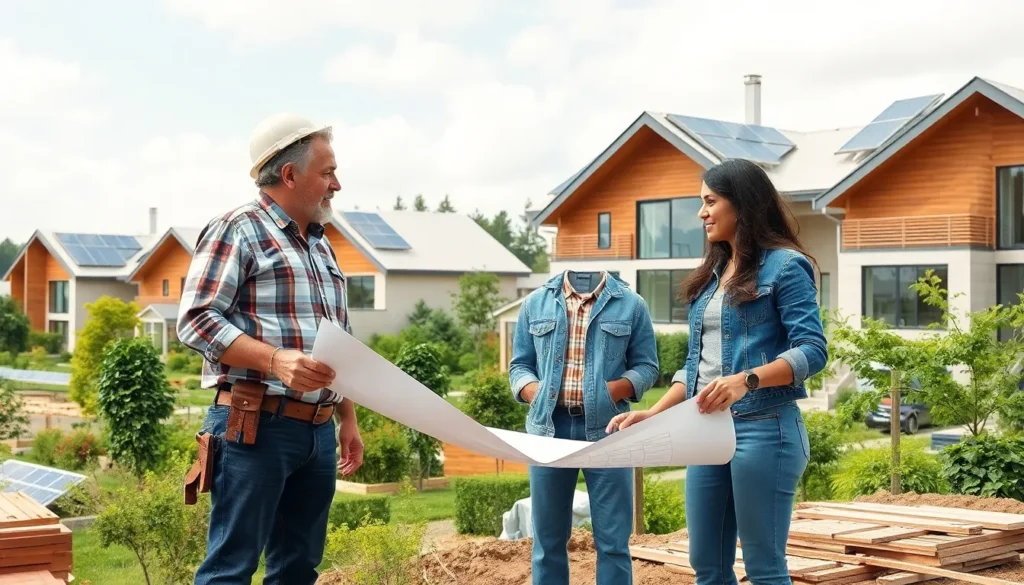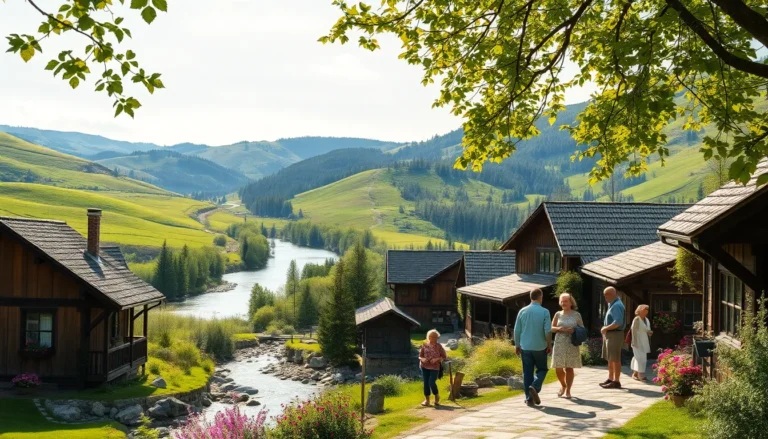In a world where the planet seems to be throwing a tantrum, sustainable living builders are the superheroes we didn’t know we needed. These eco-warriors are crafting homes that not only look good but also play nice with Mother Earth. Imagine living in a space that reduces your carbon footprint while still making your neighbors green with envy—sounds like a win-win, right?
Table of Contents
ToggleWhat Are Sustainable Living Builders?
Sustainable living builders focus on creating homes that prioritize eco-friendliness and energy efficiency. These professionals utilize sustainable materials and design techniques to minimize environmental impact. In particular, they aim to reduce waste and conserve resources throughout the building process.
Builders in this field often implement renewable energy systems, such as solar panels and geothermal heating. They promote sustainable practices like water conservation, using rainwater harvesting systems and efficient irrigation techniques. Each aspect of their work contributes to the overall goal of reducing the carbon footprint of residential properties.
Sustainable living builders also consider indoor air quality by selecting non-toxic materials and proper ventilation systems. This approach enhances the health and well-being of occupants. Moreover, they often incorporate biophilic design elements, which connect residents with nature through natural light and greenery.
Investing in sustainable living builders leads to long-term savings on energy and maintenance costs. Homeowners enjoy lower utility bills due to energy-efficient appliances and insulation systems. Additionally, properties built with sustainability in mind often have higher resale values, appealing to environmentally conscious buyers.
Overall, sustainable living builders play a crucial role in addressing climate change while creating beautiful, functional homes. They serve as leaders in the construction industry, paving the way toward a more sustainable future.
Key Principles of Sustainable Building

Sustainable building principles guide the construction of environmentally responsible homes. These principles focus on enhancing energy efficiency and using sustainable materials.
Energy Efficiency
Energy efficiency plays a crucial role in sustainable building practices. Builders incorporate advanced insulation materials to reduce heating and cooling costs significantly. Utilizing energy-efficient appliances also contributes to overall energy savings in homes. They often design homes to maximize natural light, which minimizes reliance on artificial lighting. Installing renewable energy systems, such as solar panels, enables owners to generate their own electricity. Efficient heating and cooling systems further enhance comfort while lowering energy consumption. Additionally, smart home technology helps monitor and control energy use, promoting efficient living.
Sustainable Materials
Sustainable materials form the backbone of eco-friendly construction practices. Builders prioritize locally sourced materials to reduce transportation emissions and support local economies. Recycled and reclaimed materials often feature in these constructions, minimizing waste and preserving resources. Natural materials, such as bamboo and cork, offer durability while being renewable. Low-VOC paints and finishes ensure healthier indoor air quality by reducing harmful emissions. They also encourage the use of sustainable wood certified by organizations like the Forest Stewardship Council. These choices reflect a commitment to reducing the environmental impact of building projects.
Benefits of Hiring Sustainable Living Builders
Sustainable living builders significantly enhance environmental stewardship while creating comfortable homes. Their practices contribute to renewable resource usage and sustainable development.
Environmental Impact
Sustainable living builders focus on minimizing ecological footprints. They prioritize energy-efficient designs that reduce greenhouse gas emissions. Incorporating renewable energy systems like solar panels has a substantial positive effect on the environment. Builders also use locally sourced materials, which reduce transport emissions and support local economies. They implement water conservation techniques that alleviate pressure on water resources. The overall impact of these practices promotes biodiversity and helps combat climate change effectively.
Cost Savings
Hiring sustainable living builders translates into long-term financial benefits. Energy-efficient homes lower utility bills significantly. Homeowners can save up to 30% on energy costs through advanced insulation and efficient appliances. Additionally, properties built with eco-friendly materials often appreciate faster, leading to higher resale values. Maintenance costs decrease due to the durability of sustainable materials, leading to fewer repairs over time. Investing in sustainable building practices promotes significant savings, aligning environmental goals with financial incentives.
Finding the Right Sustainable Living Builder
Identifying the ideal sustainable living builder involves several crucial factors. First, evaluate their experience and expertise in sustainable construction. Builders with a proven track record typically demonstrate strong knowledge of eco-friendly materials and energy-efficient designs.
Next, review their portfolio for completed projects that meet sustainable criteria. Successful builders often showcase homes that prioritize energy efficiency, renewable energy systems, and sustainable materials. Check client reviews and testimonials to gauge satisfaction and quality of work.
Additionally, confirm that potential builders are familiar with local building codes and regulations pertaining to sustainable practices. Builders well-versed in these requirements ensure compliance and deliver projects within local guidelines.
Request detailed estimates and timelines from shortlisted builders. Clear communication on costs and project duration reveals professionalism and transparency. Aim for builders who offer flexible solutions tailored to individual needs.
Consider their approach to collaboration. Builders who engage clients throughout the planning and construction phases often yield better results, as homeowner input significantly influences design efficacy.
Finally, assess builders’ commitment to ongoing education and adoption of new technologies in sustainable building. Those who actively seek out training and advancements maintain a competitive edge and provide cutting-edge solutions.
By focusing on these aspects, individuals can make informed decisions when selecting a sustainable living builder. Establishing a solid foundation with the right builder translates to benefits that align with both environmental goals and the desire for beautiful, functional homes.
Sustainable living builders are reshaping the construction landscape by prioritizing eco-friendly practices and innovative designs. Their commitment to energy efficiency and sustainable materials not only enhances the aesthetic appeal of homes but also contributes to a healthier planet. By choosing these builders, homeowners invest in properties that promise long-term savings and increased resale values.
As the demand for sustainable living grows, these builders stand at the forefront of a movement that balances environmental responsibility with modern living. Their expertise ensures that homes are not just built for today but are designed to thrive in the future. Making informed choices in selecting a sustainable living builder can lead to a significant impact on both personal well-being and the environment.




